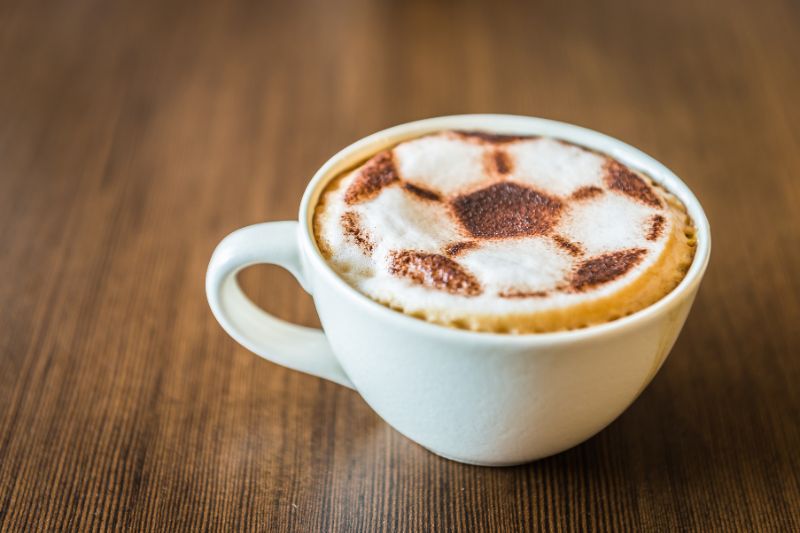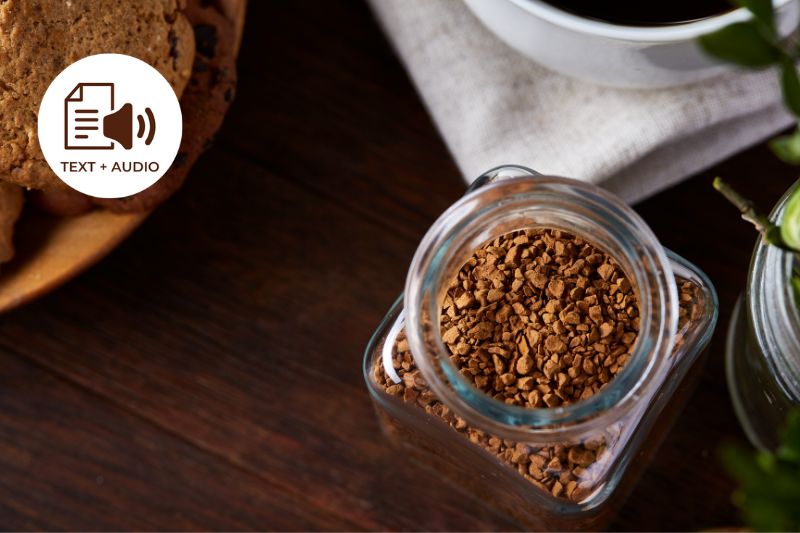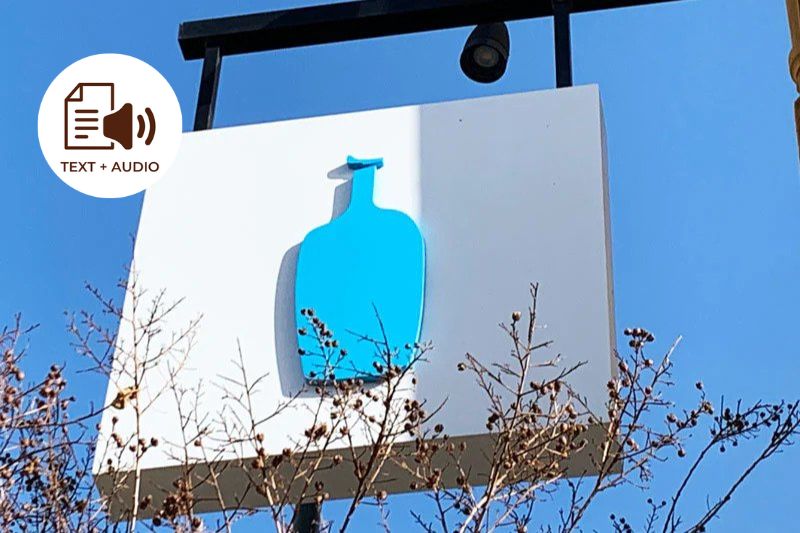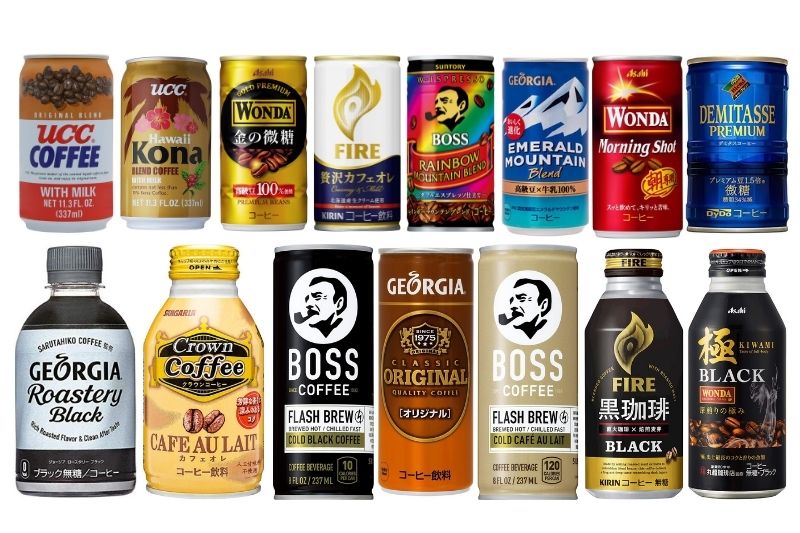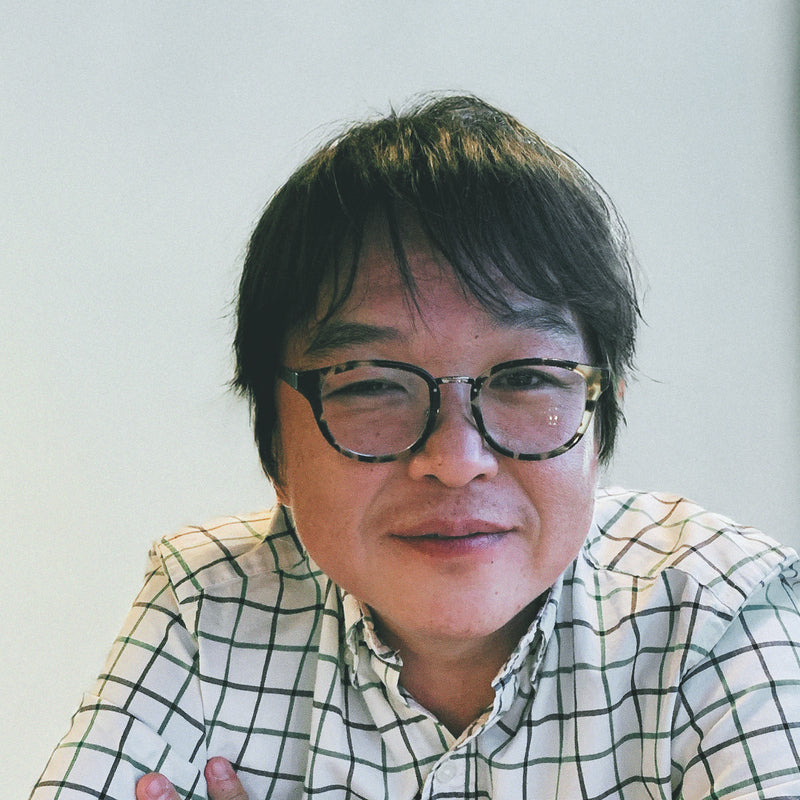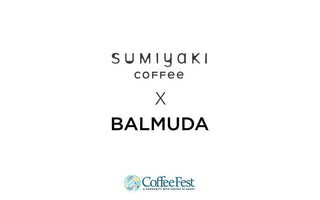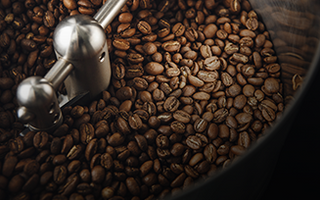Coffee’s popularity spans the entire planet. There are coffee lovers and evidence of the high demand for this favorite beverage no matter where you go. And if you ask in different places what coffee brand people are most familiar with, the answer would probably be Nescafé.

Nescafé - Instant Coffee Pioneer and Leader
Nescafé has been around for a long time. You can trace its story back to the 1929 Wall Street Crash, which challenged the Swiss company Nestlé to find a way to preserve surplus coffee beans. At that time, Brazil had produced an abundance for export, not expecting the Great Depression that was about to transpire. Tasked with this tremendous job, Nestlé’s coffee specialist Max Morgenthaler finally had a breakthrough in 1937; the resulting product was Nescafé.
Innovating instant coffee
Does it sound like Nestlé invented instant or soluble coffee? This is not the case. Records show that the British government can take credit for the first instant coffee, a coffee compound that they introduced in 1771. The United States also created its own version of instant coffee in 1851. This came in the form of an experimental cake of coffee that was rationed to soldiers fighting in the Civil War.

As for soluble coffee, it was brought about in 1890 by Kiwi David Strang. However, a Japanese-American named Satori Kato can be credited with creating the first stable, soluble coffee powder. Using Kato’s coffee process, George Constant Louis Washington made and marketed the first commercial instant coffee in 1910. I wrote more about this here.
If all these people and entities beat Nestlé to the punch, how is Nescafé a pioneer? Considering that the previous inventions were still lacking in many ways, particularly in terms of flavor, you can say that Nescafé was the first to offer great-tasting instant, soluble coffee that also kept well.
Dominating the industry
As expected, it wasn’t long before Nescafé became a household name, and it pretty much dominated the world of coffee throughout the remainder of the century. It was the coffee of choice at many important events and was present at significant milestones for humanity. For instance, it was a staple food ration for the US forces when they were engaged in war, including WWII. It also came with Sir Edmund Hillary and Tenzing Norgay on their Mount Everest expedition. However, it went even farther past that fantastic height as it joined the Apollo 11 astronauts when they landed on the moon.
Decreasing Demand for Instant
Nescafé had a solid hold on the coffee-drinking market despite the advent of branded coffee chains like Starbucks in the ‘90s. Many of these gourmet coffee shops have been around since the ‘70s, but they didn’t realize their global expansion until this time. And then, when the 2000s came along, there arose a phenomenon that excited many coffee enthusiasts: the third wave of coffee culture, which pushed craft coffee to the forefront. Now, traditional coffee brands like Nescafé were dealing not only with big, fancy chain brands but also with smaller, artisanal brands that promised a purer, more special coffee experience.

Coffee lovers were inspired not only to enjoy their daily cups but to elevate themselves to connoisseur status. This trendy penchant for a higher level of coffee experience affected the sales of instant coffee, not just Nescafé’s but also those of other brands.
According to market research company Roy Morgan’s data on Australian consumers, the following are the inferred reasons behind Nescafé’s lower sales since that time.
The spread of coffee shop culture and fondness for cups to go
Visiting coffee shops used to be an indulgence, but it has become a habit and a lifestyle factor these days. Patrons know that the coffee they’ll be getting is expertly served, and its flavor is far superior to that of the average instant coffee. As a bonus, they may also get a sandwich or pastry to enjoy with their cup for an enhanced coffee experience.
Such an encounter delivers more than a caffeine fix. It has adopted a social element for those who linger at their tables. For those who merely stop to grab their favorite brew, it equates to convenience and quality at the same time.
It can be safely stated that these specialty coffee shops are usually justified in claiming to have much better coffee. They pride themselves on sourcing beans from the best farms, using a different roasting method, brewing their coffee in a special way, or doing all three, besides, of course, providing an excellent ambiance for their customers.

Sumiyaki
Take, for instance, coffee shops that serve sumiyaki coffee. This is charcoal-burner coffee, a rare coffee style popularized in Japan. It has been around for almost a century but got considerably more attention with the introduction of the third wave of coffee culture. Coffee beans are usually roasted using direct contact or hot air, but the sumiyaki way has them roasting over charcoal, similar to hibachi-style grilling. This lends the beans a plump composition with a fluffy finish, as well as a smoky flavor and a richer aroma. You can read more about Sumiyaki coffee here.
The rising popularity of fresh craft coffee
It may seem like coffee snobbery, but coffee lovers know the difference in quality between fresh and instant. That’s why many of them are learning brewing techniques, investing in coffee-making equipment, and buying beans to make excellent coffee at home.
This has been especially true during the pandemic, when many erstwhile coffee shop frequenters were forced to stay home. If, for instance, you want to continue enjoying sumiyaki coffee but are not inclined to go out due to a government mandate or your own personal safety protocols, you can order the beans, learn the brewing technique used by the shop you frequent (Nel Drip, another Japanese innovation, is typically preferred with sumiyaki), and enjoy your coffee a la your favorite coffee house.
The growing preference for pods
In recent years, the appliance to have has been a Keurig. It makes single-serve coffee with K-cups. Many people, especially those living on their own, find this option more efficient than the coffeemaker of old. Besides being the hip thing to have, it was more practical and convenient.
Before long, other companies came up with their own products. Nestlé was one of them and introduced Nespresso. The machine brews espresso and coffee from Nespresso coffee capsules. This is a best-selling Nestlé product, with more than 3 billion Swiss francs in annual sales since 2011.

Single-serve Pour-over vs. Instant
Besides the use of pods, there is another nifty, non-instant way to achieve great single-serve coffee, and this is the pour-over method. You could use a pour-over dripper into which you can put an adequate amount of coffee grounds for one cup of coffee, or you could buy drip-on coffee that comes in its own filter bag; you can open the bag into a ready filter with cardboard handles to hook onto the edge of your cup.
How does single-serve pour-over coffee differ from regular instant? Instead of getting your coffee drink from dissolved coffee powder, which is essentially coffee that has already been brewed and then freeze- or spray-dried to create granules or powder, you extract it from the grounds that you just brewed yourself. There are so many flavors present in coffee that are volatile and compromised during the drying process. This is the primary reason why the discriminating coffee drinker prefers single-serve pour-over to instant.
Of course, gradually pouring hot water over coffee grounds and letting the resulting drink slowly trickle into a cup is not quite as quick or convenient as dumping coffee powder into a cup, adding hot water, and stirring, but many coffee lovers deem the difference in flavor worth the little extra effort and time that go into the pour-over process.
I personally prefer bringing single-serve pour-over coffee compared to instant coffee when traveling or camping. Please see here for more information about single-serve pour-over.

Nescafé’s Continued Relevance
Nestlé and Nescafé fans need not fear the future of the brands. It remains among the top coffee brands globally, actually ranking first in terms of revenue despite the noted decrease in sales compared to those of the last century. Nescafé still holds the number one position as far as instant coffee goes. It would be tough for any other brand to knock it off its solid perch.
While specialty coffee is on the rise, instant coffee is far from losing its relevance. It has a local market, particularly in the above-50 and lower-income demographics. Considering this, it is quite safe to assume that Nescafé isn’t going anywhere.
Healthy Competition
There’s a wide world of coffee drinkers out there. Many may be switching to a more involved coffee-drinking experience; however, a good percentage of them still enjoy the indubitable caffeine kick and convenience of a far simpler instant product. There’s room in the market for both. Nescafé may have had its share of the coffee market whittled down, but its portion remains significant.
Get Free Bonus Books

Sign up for free to the Coffee Club to get advice and exclusive articles about how to choose Japanese Coffee, and tips, tricks, and recipes for enjoying Japanese coffee.
About the author
Kei Nishida
Author, CEO Dream of Japan
Certification: PMP, BS in Computer Science
Education: Western Washington University
Kei Nishida is a passionate Japanese tea and coffee connoisseur, writer, and the founder and CEO of Japanese Coffee Co. and Japanese Green Tea Co., both part of Dream of Japan.
His journey began with a mission to introduce the world to the unparalleled quality of Japanese green tea. Through Japanese Green Tea Co., he established the only company that sources premium tea grown in nutrient-rich sugarcane soil—an innovation that led to multiple Global Tea Champion awards.
Building on this success and his passion for Japanese craftsmanship, Kei expanded into the world of coffee, pioneering the launch of Japanese Coffee Co., the first company to bring Sumiyaki charcoal-roasted coffee to a global audience. His dedication to authenticity and quality ensures that this traditional Japanese roasting method, once a well-kept secret, is now enjoyed worldwide.
Beyond tea and coffee, Kei has also introduced Japan’s legendary craftsmanship to the world through Japanese Knife Co., making handmade katana-style knives—crafted by a renowned katana maker—available outside Japan for the first time.
Kei’s journey continues as he seeks out and shares the hidden treasures of Japan, one cup and one blade at a time.
Learn more about Kei


